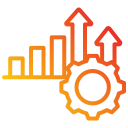Remote and Hybrid Metta Practices
Schedule a weekly chat prompt: “Name one teammate you appreciate and why.” Pair it with a short metta phrase. Keep it optional, low-pressure, and visible. Over time, the thread becomes a living archive of trust-building micro-moments.
Remote and Hybrid Metta Practices
Open meetings with a ninety‑second metta breath. Encourage cameras on or off—comfort first. Offer three shared wishes, then transition into the agenda. The tiny investment pays off with calmer voices, clearer asks, and faster alignment on priorities.




